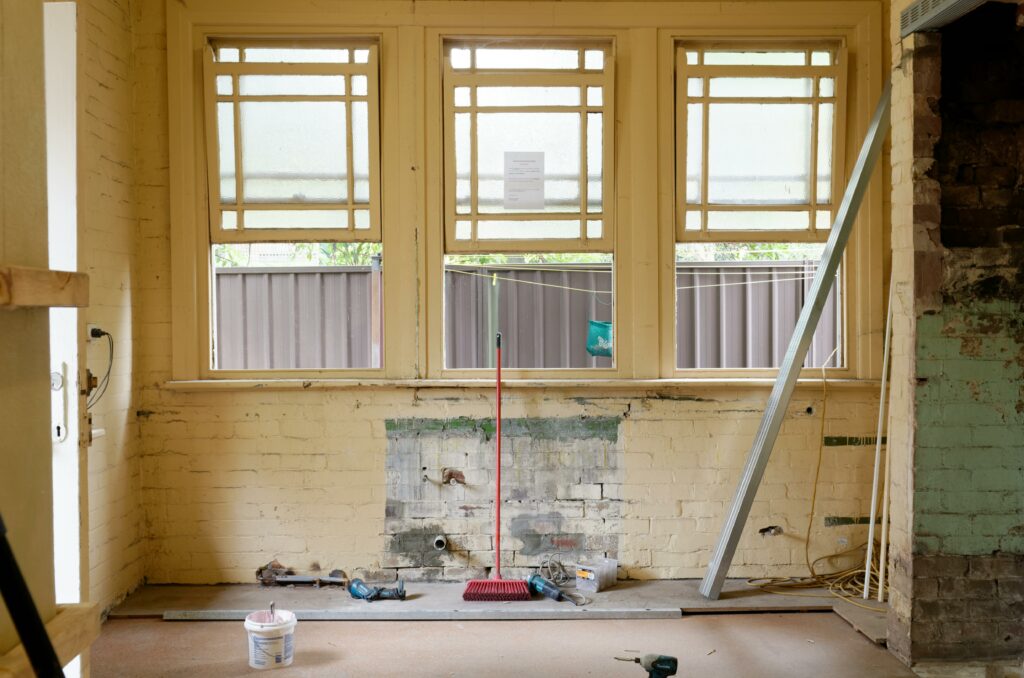Home renovations are exciting — until you open a wall and find something you weren’t expecting. Mold is one of the most common issues uncovered during remodeling projects, and missing the warning signs can lead to major delays, added costs, and serious health concerns.
Knowing what to look for can help you address hidden mold early and keep your renovation on track.

Why Mold Shows Up During Renovations
Many homeowners don’t realize mold is present until construction begins. Why? Because mold often grows where you can’t see it:
- Behind drywall
- Inside cabinets
- Under flooring
- In attic insulation
- Around old plumbing lines
Anytime materials are exposed or disturbed, hidden mold can be revealed — and spread if not handled safely.
Early Signs of Hidden Mold
During your renovation project, watch for:
- Musty odors that intensify when walls or floors are opened
- Black, green, or white spots on studs, drywall, or subfloor
- Water stains or discoloration on materials
- Soft, warped, or crumbling building surfaces
- Visible condensation around pipes or windows
If you notice these signs, it’s important not to ignore them — mold doesn’t disappear on its own.
High-Risk Renovation Areas
Some areas of the home are more likely to contain hidden mold due to moisture exposure:
- Bathrooms — leaks behind showers or sinks
- Kitchens — dishwasher and sink plumbing issues
- Basements — humidity + previous water intrusion
- Attics — roof leaks or poor ventilation
- Laundry rooms — high humidity + appliance leaks
When renovating these spaces, mold testing is especially valuable before demolition.
Why Testing Matters Before You Rip Things Out
Even if you only suspect mold is present, proper mold testing ensures:
✅ You understand the extent of contamination
✅ You identify the type of mold
✅ You prevent spreading spores during demolition
✅ You reduce remediation costs by acting early
According to the Environmental Protection Agency (EPA), mold cleanup must always be paired with fixing water problems — otherwise, the mold will likely come back.
The Centers for Disease Control and Prevention (CDC) notes that when mold is uncovered during renovations, disturbance can lead to release of spur-like particles and that non-professionals may inadvertently worsen indoor air quality.
When to Pause Your Renovation
You should stop work and call a professional if:
- You find extensive mold covering a large area
- There is mold in HVAC systems
- There is evidence of past floods or major leaks
- Anyone in the home experiences unexplained respiratory symptoms
These are clear red-flags to bring in a certified inspector.
How to Prevent Mold During Future Renovations
Take these preventative steps as you rebuild:
- Install proper ventilation in bathrooms and attics
- Upgrade insulation to reduce condensation
- Fix plumbing leaks promptly
- Use mold-resistant drywall and paints
- Keep humidity levels 30–50% with dehumidifiers
Planning ahead reduces risk and protects your investment.
Keep Your Renovation Safe and Stress-Free
Renovations are supposed to help make your home healthier — not uncover new problems. Mold testing before and during remodeling gives you peace of mind, ensures safe demolition, and protects the value of your home.
👉 If you’re opening walls, replacing flooring, or renovating high-moisture areas, our certified inspectors can help make sure hidden mold doesn’t derail your project.
📞 Contact us today to schedule a pre-renovation mold test!
